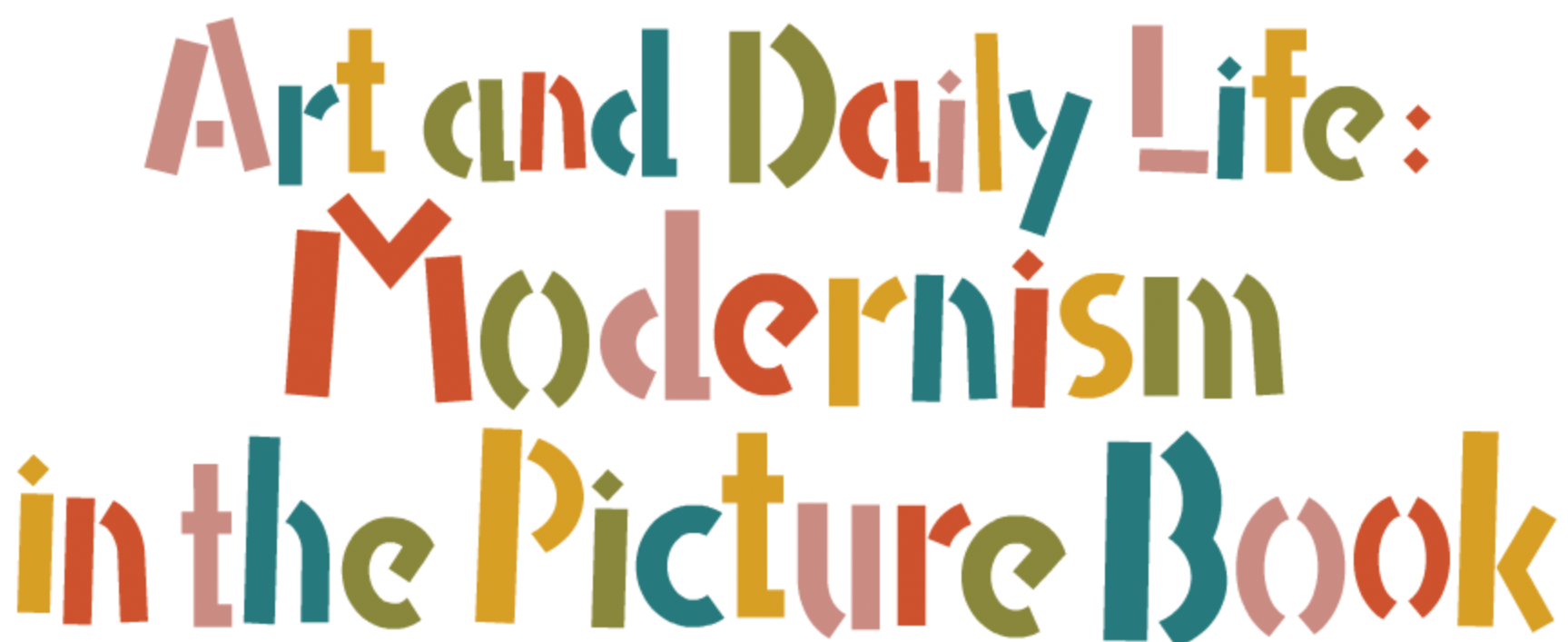本文
Bibliography

The Circus
Цирк
Raduga; Leningrad.
1928(1925),
12 pages.
290x230 mm.
© by permission of Aleksandr Marshak, Iakov Marshak, and Ada Lazo
We thank Mr.Aleksandr Marshak, Mr. Iakov Marshak, and Ms. Ada Lazo for giving permission to use The Circus.
1/15
The Circus

2/15 Push an image to enlarge
(♪) The circus. By Samuil Marshak. Illustrated by Vladimir Vasil’evich Lebedev.
The Circus
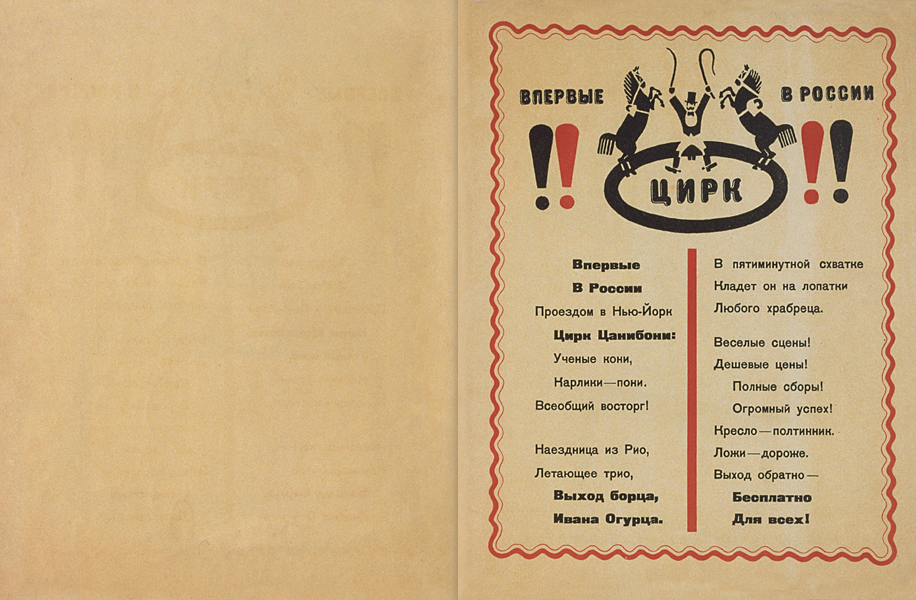
3/15 Push an image to enlarge
The circus first comes to Russia. This is the first occasion to visit Russia. On the way to New York. For the sunny pony circus. With its skillful horses, donkeys, and ponies. Please come and see! All are welcome! The circus girl from Rio. The trio on the trapeze. And here comes Ivan Curie, the wrestler! No opponent is too strong to be downed in five minutes a knock-out victory! And the famous Jocko the clown all the way from Paris to Russia for the first time. The clown always looks frightened with his flying, rumpled hair getting one thousand punches an hour in the face! Lots of fabulous attractions! Cheap tickets! A full house! Everyone’s going to the circus! Fifty cents a regular seat, a little more for a box. There is no fee for anybody going home!
The Circus
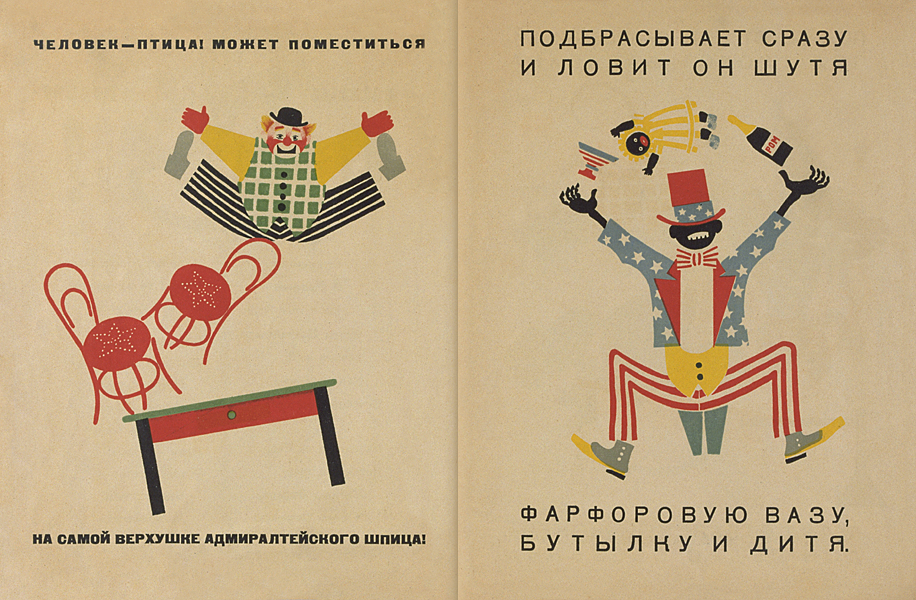
4/15 Push an image to enlarge
(♪) Here is the man who flies like a bird! He can climb up to the top of the tower of navy ministry building!
(♪) A flower vase, a bottle, even a small baby, he can toss them up all at once, and tumble them round and round!
(♪) A flower vase, a bottle, even a small baby, he can toss them up all at once, and tumble them round and round!
The Circus
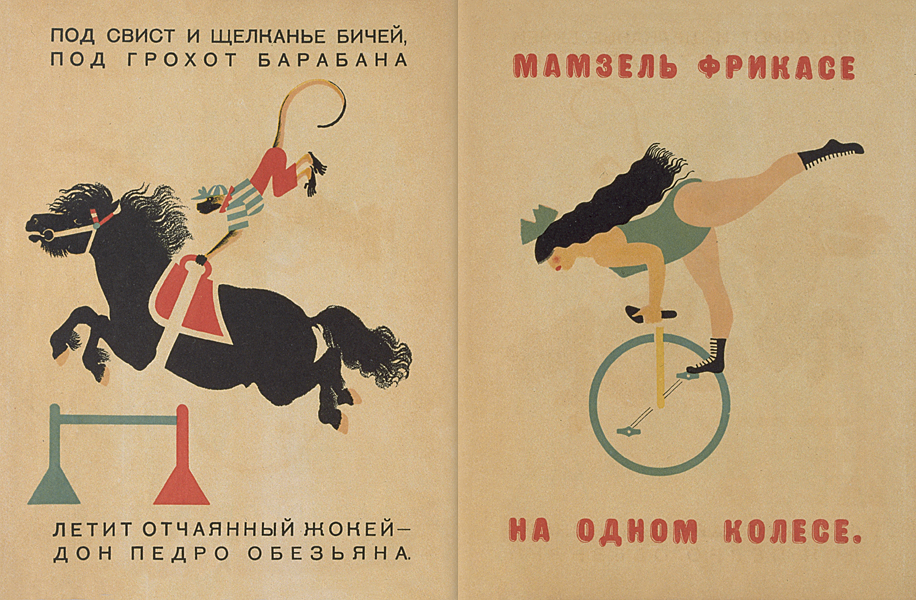
5/15 Push an image to enlarge
(♪) With a whistle and a crack of the whip! To the roll of the drums. The fearless monkey jockey, Don Pedro, flies over the jumps!
(♪) Mademoiselle Frikase riding elegantly on her unicycle!
(♪) Mademoiselle Frikase riding elegantly on her unicycle!
The Circus
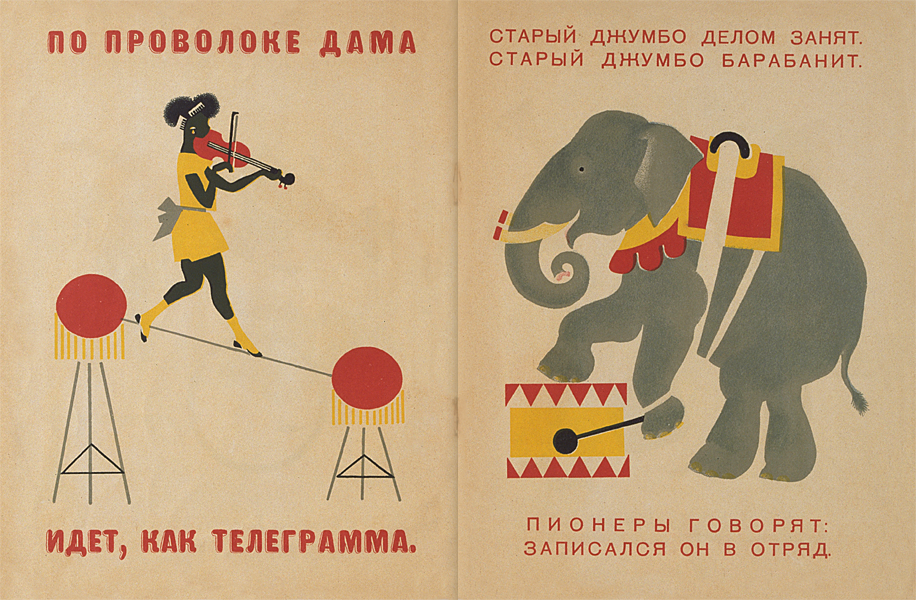
6/15 Push an image to enlarge
(♪) The fine young lady walks the wire playing a violin with a beat like a telegram!
(♪) Old Jumbo the elephant is busy, beating the drum. “is the elephant also a member of the circus?” Asked the pioneer children.
(♪) Old Jumbo the elephant is busy, beating the drum. “is the elephant also a member of the circus?” Asked the pioneer children.
The Circus
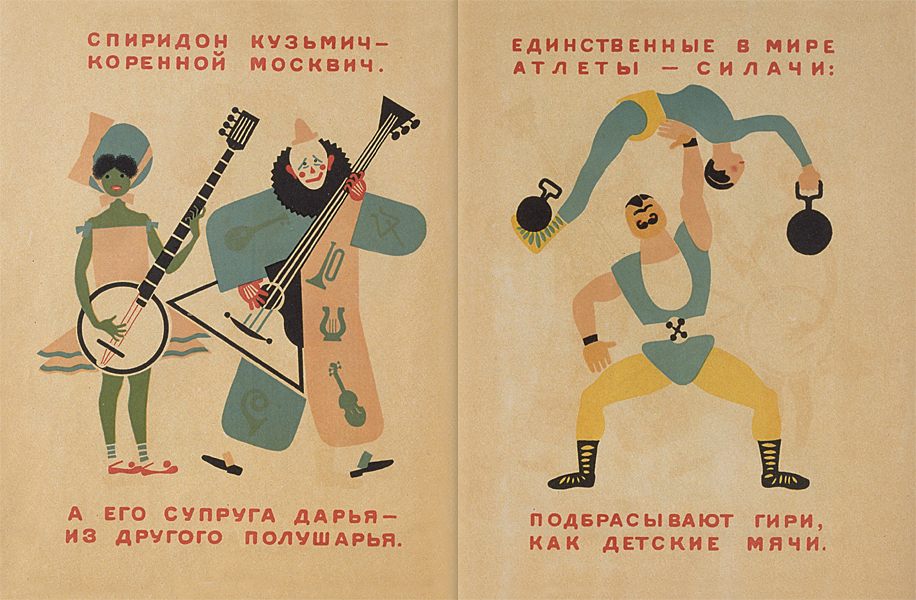
7/15 Push an image to enlarge
(♪) Spiridon Kjimir Is a born-and-bred Moscovite! Darya, his wife comes from the Southern Hemisphere!
(♪) The world famous Muscle Man! Scooping up a child like a ball, and tossing the dumbbells into the air!
(♪) The world famous Muscle Man! Scooping up a child like a ball, and tossing the dumbbells into the air!
The Circus
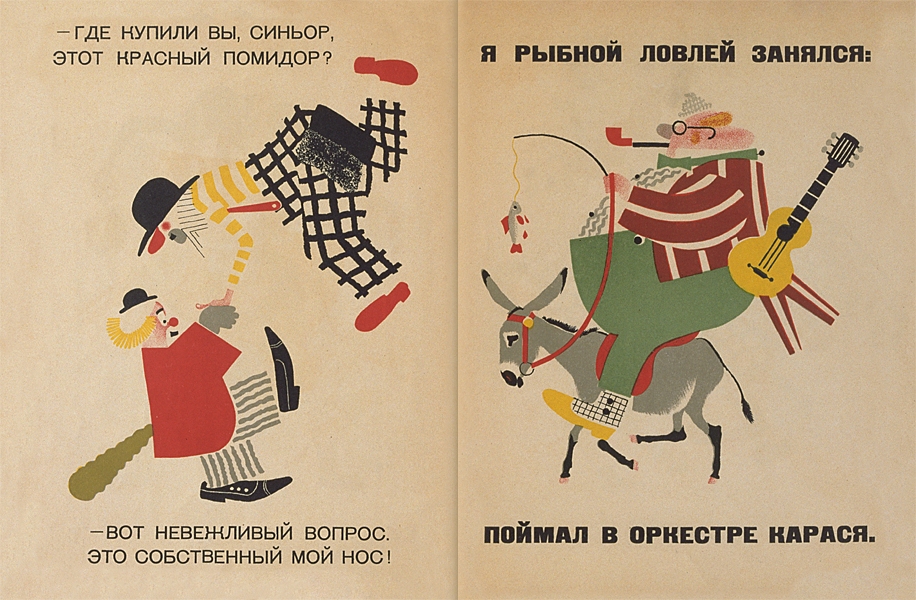
8/15 Push an image to enlarge
(♪) “My dear sir, where did you find that beautiful red tomato?” “Don’t be so rude! Can’t you see that is my nose!”
(♪) He went fishing in the orchestra box and he caught a carp! “I’ll take this home” He said, “and cook it for lunch!”
(♪) He went fishing in the orchestra box and he caught a carp! “I’ll take this home” He said, “and cook it for lunch!”
The Circus
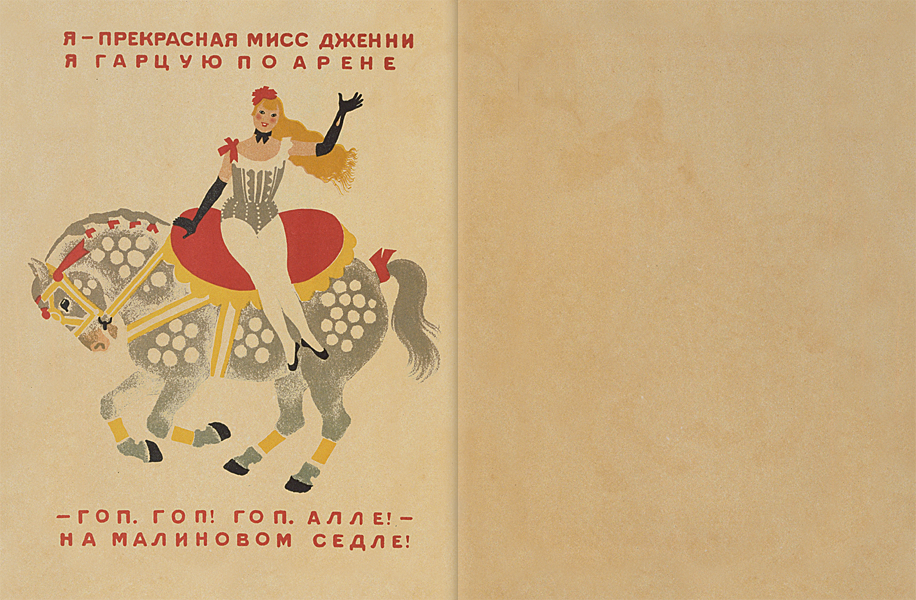
9/15 Push an image to enlarge
(♪) “How do you do? I’m Pretty Miss Jenny!” Deftly controlling the reins as her steed gallops around the stage seated gracefully on the crimson saddle “Off we go! Jump, jump! Now, bow to everyone!”
No narration on page 10
The Circus

10/15 Push an image to enlarge
No narration on page 11
About the author 1/4
By Samuil Marshak (1887–1964)
Pictures by Vladimir Lebedev (1891–1967)\
1)
After the Russian Revolution and the establishment of the Union of Soviet Socialist Republics in 1917, the process began of creating a literature for the young people who would be the future leaders of the new country. Samuil Marshak put out many works of poetry, plays for children, and translations, together with Maksim Gorkii and Kornei Chukhovskii playing a leading role in establishing the foundations of Soviet children’s literature.Born in Veronezh, a southern part of Moscow as a son of poor Jewish factory craftsman, Marshak began writing poetry early in life, and his talent was eventually discovered by the well-known critic Vladimir Stasov, who introduced him to Gorkii, opening up for him the path into literature. He went to study at the University of London when he was twenty-five.
11/15
No narration on page 12
About the author 2/4
2)
After the Revolution of 1917 Marshak founded a children’s village for war orphans as well as a children’s theater. His first works of children’s literature were plays. In 1922 he organized the children’s literature studio in Leningrad (St. Peterburg) and trained many writers. In 1924 he became the head of the state publishing house Gozidat and, at the first Soviet Writers Congress (Sezd Sovetchikh Pisatelei) in 1934, presented a special report titled “Bol’shaya literature dlya malen’kikh” (Great Literature for Little People).Marshak’s poetry is bright, simple, clear and humorous. Many of his works have been favored and reprinted. He is well known in Japan also for his play for children “Dvenadtsat’ mesyatsev Slavyanskaya skazka” (Twelve Months) and the Slav story, known by its Japanese title “Mori wa ikite iru” (The Forest Is Alive).
12/15
No narration on page 13
About the author 3/4
3)
Lebedev was a leading illustrator of the golden age of Soviet picture books. Born in Petersburg, he studied at the Akademiya khudozhestv (Academy of Art). After the Revolution from 1920 to 1922 he worked for Okon Rosta (Rosta Window), making political posters in St. Petersburg. In 1924 he was put in charge of the art department at Gozidat.As an artist Lebedev was called the perfect match for Marshak in pursuing the potential of picture books. Together they created many masterpieces including The Circus, Ice Cream, Baggage, and Yesterday and Today. The original free, satirical, and humorous quality of Lebedev's art that had developed under the influence of the Russian avant-garde was not accepted, however, with the advent of Socialistic Realism, and he was severely criticized in the party organ Pravda. Accordingly, toward the end of the thirties Lebedev’s style changed into more lyrical expression, as exemplified by such works as Twelve Months (short stories, 1943) and Tikhaya skazkav (Quiet Stories).
13/15
No narration on page 14
About the author 4/4
4)
It is said that Circus (1925) started with Lebedev’s artwork, for which Marshak subsequently wrote the poems. The book brims with the action and fun of the circus, featuring an innovative structure reminiscent of poster art with its succession of humorous and colorful scenes. The cover page displaying the names of both the poet and the artist in large red letters of equal size is testimony to the collaboration between the two in creating this picture book.
14/15
Contents
15/15
